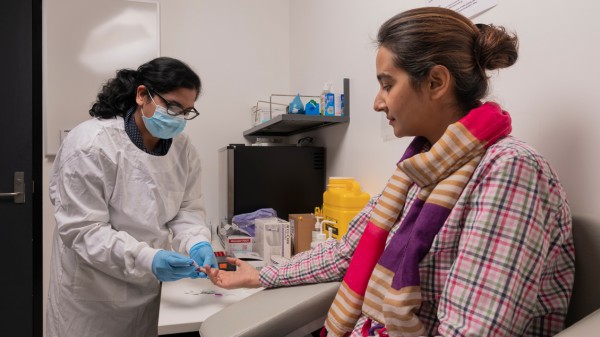Researchers from The Australian National University (ANU) have identified a gene called TLR7 that, when over-activated, is responsible for causing lupus, an autoimmune disease that can be life-threatening in severe cases.
TLR7 is programmed to help the immune system guard against viral infections, but in its mutated form it can become aggressive and cause the immune system to attack healthy cells.
The discovery, made by an international team of scientists, could pave the way for new and more effective treatments for lupus, but without the side-effects associated with current therapies.
Current treatments often leave patients more susceptible to infection and can also lower the patient's quality of life. The research is published in Nature.
"This is the first time scientists have shown a genetic variation of the TLR7 gene to be a driver of autoimmune disease," senior author Dr Vicki Athanasopoulos, from the ANU John Curtin School of Medical Research (JCSMR), said.
"This raises the exciting possibility of developing new drugs targeting TLR7, potentially revolutionising treatments for lupus."
There is currently no cure for lupus, a disease that is estimated to affect nine times more women than men. Symptoms can vary from mild to severe and can include inflammation in organs and joints, impacted movement, skin rashes and fatigue. In extreme cases, complications can be fatal.
Senior author Professor Carola Vinuesa, from the ANU Centre for Personalised Immunology and the Francis Crick Institute in the United Kingdom, said: "It has been a huge challenge to find effective treatments for lupus; current treatments are predominantly immune-suppressors, which work by dialling down the immune system to alleviate symptoms.
"Although there may only be a small number of people with lupus who have mutant variants of TLR7, the fact that we have confirmed gain-of-TLR7 function to be a cause of lupus means we can now start to search for new treatments."
The TLR7 mutation was discovered in a young Spanish girl called Gabriela, who was diagnosed with lupus when she was seven years old.
Using a gene-editing tool, the researchers introduced the human-derived mutation into mice to study whether the disease developed in the rodents.
"Mice carrying the mutant TLR7 protein developed a condition that mimicked severe autoimmune disease in human patients, providing evidence that the TLR7 mutation causes lupus," PhD scholar Grant Brown, also from JCSMR, said.
"This newly generated mouse model provides us with a framework to continue to understand the immune system and how autoimmune diseases develop in humans."
Dr Athanasopoulos said: "Our animal model, along with the human TLR7 variant, paves the way for designing and trialling targeted therapeutics to help patients with a similar type of TLR7-mediated lupus."
The researchers say the mouse model can be used to test new and existing drug therapies that inhibit the TLR7 gene, in a bid to provide some reprieve to patients suffering from lupus.
"Our research aims to elicit further understanding of these complex diseases, which we know little about," Mr Brown said.
"Autoimmune diseases such as lupus have many causative factors from our genetics to environmental influences, making them difficult to study.
"Therefore if we can better understand how these diseases develop, we have a greater chance of developing more tailored therapeutics with fewer side effects for patients."
The researchers are now working with pharmaceutical companies to develop new drugs or tweak existing ones to explicitly target the TLR7 gene and other proteins acting in the same biochemical pathway to the TLR7 protein.
"There are other systemic autoimmune diseases, like rheumatoid arthritis and dermatomyositis, which fit within the same broad family as lupus," Professor Vinuesa said.
"TLR7 may also play a role in these conditions."
The research findings may also help explain why women are about nine times more likely to develop lupus compared to men. TLR7 is present in the X chromosome, and women have two X chromosomes and two copies of the TLR7 gene. Men only have one X chromosome.
"This means females with an overactive TLR7 gene can have two functioning copies, potentially doubling the harm," Professor Vinuesa said.














